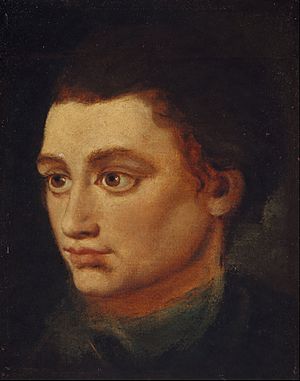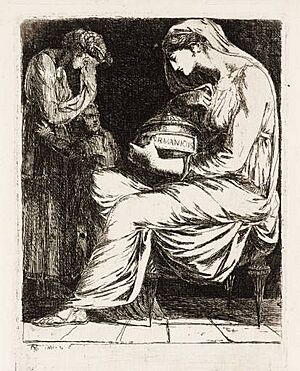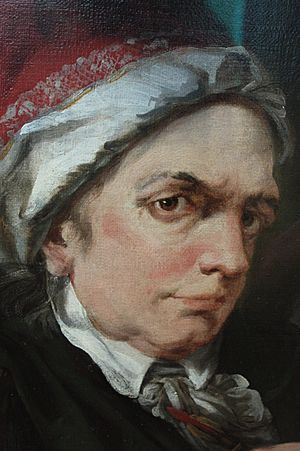Alexander Runciman facts for kids
Alexander Runciman (born August 15, 1736 – died October 4, 1785) was a talented Scottish artist. He was famous for painting scenes from history and old myths. His younger brother, John Runciman, was also a painter.


Contents
Early Life and Training
Alexander Runciman was born in Edinburgh, Scotland. He began his art studies at the Foulis Academy in Glasgow. From 1750 to 1762, he learned from Robert Norie, a landscape painter. Runciman later became a partner in Norie's family business. He also painted scenery for the Theatre Royal in Edinburgh.
Time in Italy
In 1767, Runciman traveled to Rome, Italy, where he stayed for five years. His brother John went with him but sadly passed away in Naples. While in Italy, Alexander met other famous artists like Henry Fuseli. At first, Runciman painted landscapes. But in Italy, he started focusing on historical and imaginative subjects. One of his early works in this style was Nausicaa at Play with her Maidens, shown in 1767.
Return to Scotland
After his time in Italy, Runciman briefly visited London. In 1772, he showed his art at the Royal Academy. Soon after, he moved back to Edinburgh. There, he became the master of the Trustees' Academy, an important art school.
Famous Artworks
A wealthy supporter named Sir James Clerk hired Runciman. He decorated the hall at Penicuik House with paintings based on the ancient tales of Ossian. These paintings were inspired by other famous artworks, like Gavin Hamilton's Iliad pictures.
Runciman also created several religious paintings. He painted an altar-piece for the Cowgate Episcopal Church in Edinburgh. Other well-known easel paintings include Cymon and Iphigenia, Sigismunda Weeping over the Heart of Tancre, and Agrippina with the Ashes of Germanicus.
During his life, Alexander Runciman was also highly regarded as a landscape painter.
Later Years
Alexander Runciman passed away in Edinburgh. He is buried in Canongate Churchyard. His grave does not have a headstone. However, a special plaque was placed on the church wall in 1866 to remember him and his brother John.
Known Works
- Robert Fergusson (a portrait)
- East Lothian Landscape
- Dunvegan Castle
- The Blind Ossian Singing
- Self portrait with John Brown
- The Witches Showing MacBeth the Apparitions
- Fingal Encounters Carbon Carglass
- Agrippina with the Ashes of Germanicus
- Hubert and Arthur
- Agrippina Landing at Brundisium
- A View near Perth
- Italian River Landscape with a Hermit
- David Steuart Erskine
- Temple of the Sibyl at Tipoli
- Murals in the east apse in St Patrick's Church South Gray's Close, Edinburgh.


